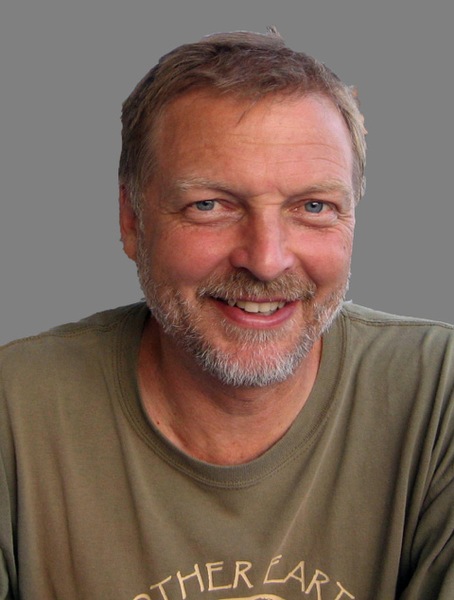Aquatics Gems Project brings awareness to the Florida Water Crisis

Through video and photographic imagery, the Aquatic Gems Project came to life early 2015 to celebrate and highlight the extraordinary beauty of local water resources. Spearheaded by lifelong environmentalist Robert Sitler, Professor of World Languages and Cultures at Stetson University, the project focuses on diverse aquatic sites that are accessible on public lands within a 30-mile radius of DeLand, Florida.
Dr. Sitler has a strong interest in native cultures, which ties together with a deep regard for the natural environment, including vital water sources. He developed a passion for all things aquatic during his PhD research, and when he moved to DeLand, 22 years ago, he realized that he was surrounded by “a paradise in terms of its waters.” He started exploring local springs, and has been diving and researching water quality since. “I have been a fanatic about it ever since I moved to DeLand.”
However, Dr. Sitler has seen stark changes in local water quality over the years. Thus, he decided to turn his water hobby into a project with a bigger purpose; to educate people on the fragility of the springs.
“I want to spread awareness of the natural beauty that’s sitting right here,” the water enthusiast said. “In particular, highlight the fact that local water sources are in serious jeopardy. We need to encourage thoughtful conservation efforts.”
According to the professor, the water quality of the prehistoric springs is declining very rapidly due to three main problems; 1) leaky septic tanks, 2) excess lawn & landscaping fertilizers, and 3) overconsumption of groundwater.
“There are many things that can be done to improve the quality of the springs,” he said. “First, we got to figure out what to do with human waste that leaks out through the septic systems. Secondly, stop or drastically reduce the use of fertilizers as well as reducing needless artificial landscaping. At the moment, water is being used inappropriately.”
Another thing people can do to help conserve water sources, is to only plant native. “Native Florida plants grow beautifully on their own without excess water and fertilizer,” he said. “There are some good people out there doing good work to improve the quality of our waters, but we need more people to see what’s happening. Florida’s natural waters are in crisis.”
Today, many people visit and enjoy the local springs and other water sources around DeLand. However, Dr. Sitler explained that it’s hard for the untrained eye to see what’s going on with the natural environment since most of the damage is underwater, and concerns water quality. One of the most apparent signs of a deteriorating spring is the increased presence of algae due to excessive nutrients in the water. This is currently happening in all of our local springs and many other waterways, according to Dr. Sitler.
In Florida, these ecological gems support entire ecosystems with unique plants and animals. They also flow into other rivers that are dependent on the springs clean fresh water. In addition, the springs provide a window into Florida’s supply of drinkable water, the Florida Aquifer. If the springs are unhealthy, it's a bad indication of the quality of water that Florida residents drink, cook with, etc.
Yet, Dr. Sitler seems hopeful about the future of local springs. “When citizens understand the impact they have on spring water quality, they will help,” he said. “If citizens and government work as a team, it will make a big difference.”
All the photographs and videos showcased in the Aquatics Gems Project were taken by the professor himself. The self-taught photographer said that the only things that make him different than other photographers is that he “shows up” at the right time; early in the morning, diving in waters when outside temperatures are close to freezing. “This project provides a new way to promote and encourage conservation efforts.”
Over recent months, the Aquatics Gems project has expanded to also include a collaboration with the Institute for Water and Environmental Resilience, a Stetson University initiative that embodies its institutional commitment to a “greener” future.
For the future, Dr. Sitler will continue to study the water and the impact of conservation on water sources. He is also playing with the idea of adding an eco-tourism section to the Aquatics Gems Project. “I would like to offer a more in depth experience where visitors get to know the local waters but also the cultures here,” he said. “Deland has a lot to offer.”
Dr. Sitler is originally from Kent, Ohio, but has lived in DeLand since 1994. He earned a B.A and M.A from Kent State University in Spanish, and a PhD in Hispanic Literatures from University of Texas at Austin.
The Aquatics Gems project includes three first-magnitude freshwater springs, the second largest lake in the state, extensive marshlands, the “black” waters of Florida’s longest river, the most biodiverse estuary in North America, and broad expanses of undeveloped Atlantic Ocean beach.
The end goal with the Aquatics Gems Project is to engage citizens and agencies to take bold steps necessary to ensure the protection and restoration of spring water quality and quantity in Florida. “We want to get people educated, emotionally involved, and of course wanting to help conserve it by changing their habits, “he said. “I hope people want to make a difference for the future.”
You can view Dr. Sitler’s video of Aquatic Gems at the Gillespie Museum. Also, don’t miss the water festival on October 16, between 10am – 5pm. Dr. Sitler’s work will be there.
Bookmark & Share
Most Popular Articles
- Exploring the Athens of Florida
- Inside DeLand?s Springs: An Enchanting Aquatic Experience
- Back to School: Exploring DeLand?s Favorite Study Spots
- Art Education in DeLand
- Fine Art and Fresh Air at DeLand?s Sculpture Walk and Artists? Reception
- Celebrating Community Unity Day in DeLand
- Celebrating National Photograph Month in DeLand
- Stetson University: A Local Landmark
